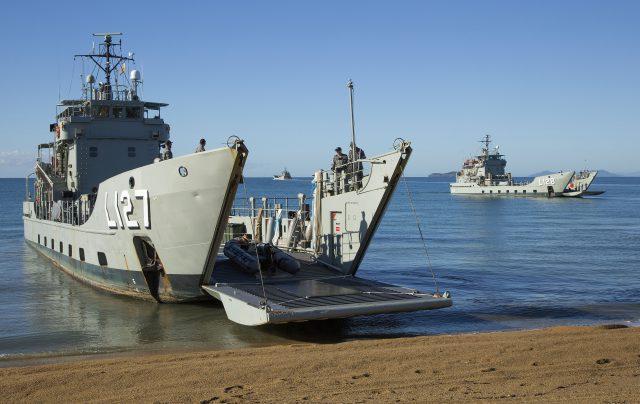
In an interview in Australian Foreign Affairs, Paul Keating noted that China under Xi Jinping was looking to craft a new form of global governance, rejecting the notion of China as a strategic client of the US. Keating also talked about our need to be clever.
He observed that ‘before the Industrial Revolution, China was on the top of the system and had a tributary system of states which bowed and genuflected to them. Let’s hope we’re not going to be bowing and genuflecting.’ He went on to say that ‘self-reliance and self-help should be the keynote of our foreign policy’. In my view, that needs to expand to defence policy as well.
Depending on the US isn’t the answer, just as in 1942 Britain in its own ‘darkest hour’ could do little to help us. This is our real dilemma. From a defence perspective, how does Australia become clever and manage the emerging behemoths in our Indo-Pacific region, while maintaining our key alliances and using the US as a ‘balancer’?
We could start by looking at maritime issues from a true strategic perspective, rather than, as is often expressed, a job policy for South Australia and other states. We also need to educate Australians—ignorance of the sea in Australia’s historiography is overwhelming.
In 2002, I coined the phrase that as a nation we are ‘girt by beach’ not ‘girt by sea’. Australians and beaches have synergy, and if we consider maritime issues, our thinking is, at best, only about three kilometres to sea—the view we get from the beach. Before 1914, we started very well with an effective naval force that had strategic dominance over the German Pacific fleet, deterring attacks on Australian cities, but then came the horrendous casualties in land warfare, especially on the Western Front.
The impact of that on the Australian psyche was felt throughout World War II and continues to skewer defence culture and thinking in Australia, resonating in a deeply personal and tragic way in Australian remembrance. For matters pertaining to the sea, we see ourselves as a small element within a larger maritime force, first British and now US.
As a result, when naval officers speak on maritime issues there remains a hesitancy to challenge the primacy of land forces and land-based air power. The emphasis is on individual naval programs, employment opportunities and the like. Basically, we’re content to be thankful for what we have and to stay relatively quiet.
Little focus is put on the enduring concepts of sea control and maritime strategy, which are supposed to be the rationale for developing and deploying maritime power, especially for an island continent. In a region increasingly dominated by China and India, Australia is unlikely to fight at home unless our maritime forces are first destroyed.
Australia is surrounded by the three largest oceans on earth, yet governments over more than three decades have failed to focus on forward defence via powerful, sustainable and deployed maritime forces. China and India are focusing increasingly on that area.
Despite much that is written and spoken, we have a navy that remains a sea-denial element of a continental strategy. There’s little ability to take power and project it forward. Mobile sea-based air power and strike is neglected, almost vilified, and to even debate it is heresy in Australian defence circles. We’ve been lulled into thinking that transporting land forces over the sea is the navy’s primary role, not taking the war to the enemy, violently and aggressively.
The navy of today and tomorrow is the same size in a ship sense as it was in 1976 when I joined, with about a dozen destroyers and frigates. However, strategically we’re significantly less effective vis-à-vis the region. The minister’s introduction to the 2016 defence white paper states that it ‘sets out the most ambitious plan to regenerate the Royal Australian Navy since the Second World War’. That sounds impressive, but it’s essentially misleading—in essence, we’re doing ship replacement. The navy remains too small and it’s a self-defence force, with limited power projection or ability to conduct sea control at distance.
We should be talking to the Australian public about strategic truths in a language they understand, explaining to them the new reality. To have self-reliance and self-help in this era requires a much larger, more potent navy. Fixed-wing, strike-capable aircraft carriers are required to project maritime air power via the short take-off, vertical landing version of the joint strike fighter. And we need perhaps twice the number of destroyers and frigates, so that we can really carry out aggressive operations against numerically larger air, surface and submarine threats, to dominate, deter and if necessary defeat. The submarines we’re getting are potentially good, but that’s an isolated area of improvement.
Even with the less-than-lethal force of today, the navy is about 2,000 personnel too small, resulting in stresses at each and every operational interface. Can we afford to be clever? Not on a 2% defence budget—so that’s the first discussion we need to have as a nation.
As an island continent in the new Indo-Pacific reality, we cannot remain mute as our maritime forces continue to be deficient.